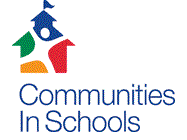
WHO
is Communities In Schools (CIS)?
We are 5,000 professionals and 65,000 volunteers, working in more than 3,200 K-12 public schools, in the most challenging communities, serving nearly 1.4 million young people and their families every year.

WHAT does
Communities In Schools (CIS) do?
CIS brings hands in need together with hands that can help.
CIS is a process that connects community resources with
students and their families at the school site to ensure
that youth stay in school, learn needed skills, and are
prepared to enter the world of work.

WHY do we need CIS?
Every year, 1.2 million students drop out of school. What that means is every nine seconds, a student in America loses his or her path to a better future. Too
many young people are failing in our public schools today,
and, consequently, leave school without the skills needed
to succeed in life. In North Carolina during the 2002-2003
school year, over 19,834 students dropped out of public
schools. 85% of juveniles in court today are school dropouts.
82% of prison inmates are school dropouts. Schools alone
cannot solve the complex and diverse problems faced by today's
youth. By empowering students to achieve in school and life, we are building a stronger America, where every person is capable of reaching his or her greatest potential.

HOW does CIS work?
CIS
supports the development of collaborative community strategies
for improving the way existing programs and services serve
students and families. Students' school failure is the result
of multiple stresses, most often from factors outside of
school. The CIS process enlists, coordinates and facilitates
the delivery of already existing community resources to
the school site. Within a school, CIS works with repositioned
service providers (from many agencies and organizations)
and school personnel so that they function together as a
team to deliver their services in a personable and accountable
manner. In this way, they effectively and efficiently meet
the needs of students and their families.


